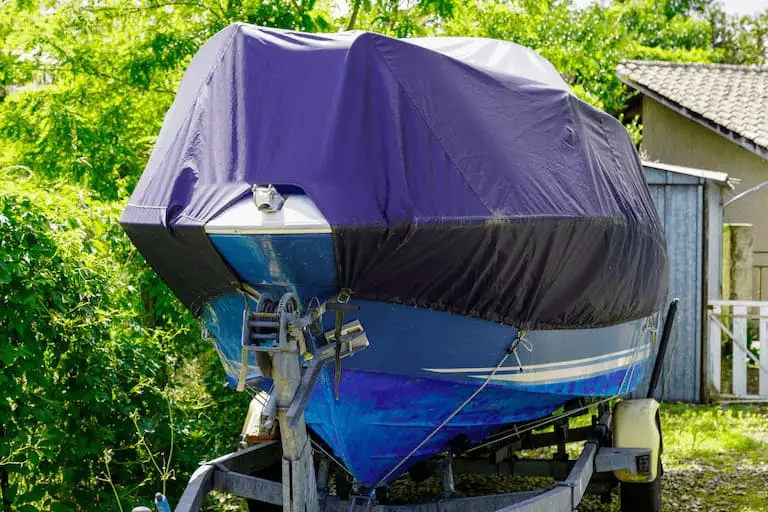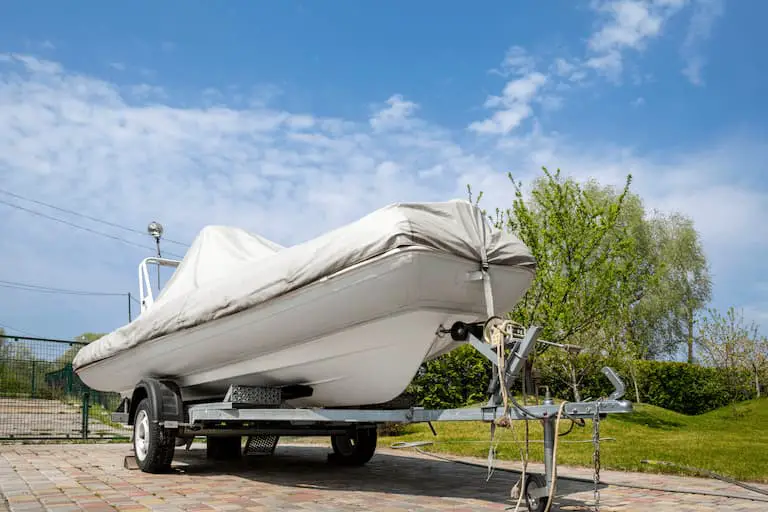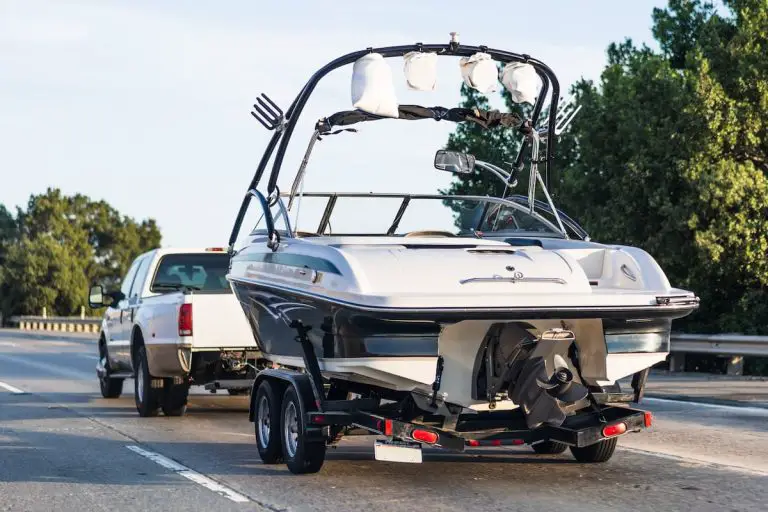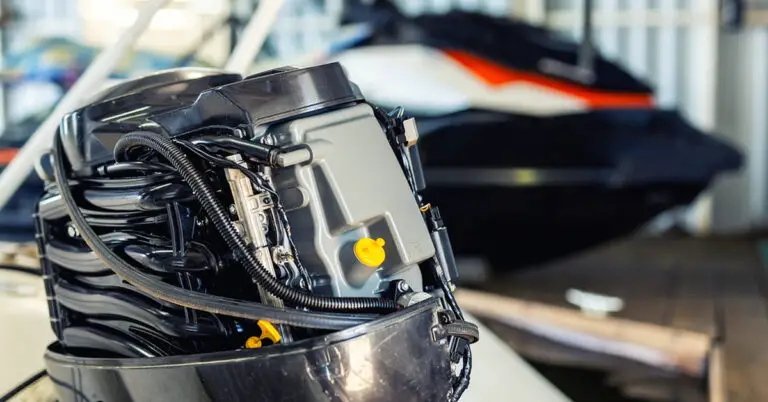How To Keep A Boat Dry Under a Cover? (Complete Guide)
Keeping your boat nice and dry under its cover is a must for every boat owner. Doing so will allow you to prevent mold and mildew from appearing on your boat, which will prolong the lifespan of your vessel and ensure that it stays in great shape for the boating season. You can make sure to keep your boat dry under a cover by using several effective tricks or even combining a few different ones.
If you’re wondering how to keep a boat dry under a cover, here are 7 things you can do:
- Let the boat dry completely before covering it.
- Keep the boat away from snow.
- Install vents on the boat cover.
- Use a dehumidifier in the storage space.
- Use desiccant beads.
- Use charcoal to dehumidify the area.
- Store rock salt in the boat for dehumidification.
Read on to learn more about the ways in which you can keep moisture away from your boat and protect it from any damage that may occur while it’s in storage. I’ll go over some tricks and some valuable materials that you can use as desiccants, as well as some additional pieces of advice about storing your boat.

1. Let the Boat Dry Completely Before Covering It
This is the first and most essential step you need to take before covering your boat and storing it for the winter. If you want to keep your boat dry in storage, you have to make sure it is dry to begin with. Simply leaving it out in the sunlight, preferably on an elevated surface that allows good airflow, should do the trick.
It is also a good idea to wash your boat thoroughly before you leave it out dry. Get yourself a brush and some good cleaning agent, roll up your sleeves, and scrub the boat until every piece of dirt and every stain is removed.

Deep Cleaning Prevents Further Boat Damage
Giving your boat a thorough cleaning will remove any possible traces of mildew and mold on your boat, thus preventing it from spreading during the storage period.
The cleaning process will also allow you to inspect your boat for any cracks or other traces of damage so that you can act accordingly. You’ll also be able to get ready for any algae or similar growth, which can damage your boat.
It might also be a good idea to apply some kind of mildew repellent, just in case. You probably don’t want to take any chances.
2. Keep the Covered Boat Away From Snow
If you want your boat to remain dry once you’ve cleaned and dried it, you’ll need to make sure that no moisture lingers on the cover. If you live in an area with a lot of snowfall, this means that you’ll have to remove any snow that falls on your boat cover.
This is especially important for those boat owners who have covers that are not exceptionally high-quality. If you notice that your cover tends to let a little bit of moisture through, be sure that you get rid of any snow that falls on it.
Even if you have a good boat cover, melting snow can still find its way to your boat and possibly cause some damage. There’s no need to take any chances, so be sure to keep your boat cover snow-free.

3. Install Vents on the Boat Cover To Keep Things Dry
The key to preventing moisture from building up under your cover is allowing good airflow. An excellent way to achieve this is to install some vents on your boat cover. There’s a large variety you can choose from, so you’re bound to find something that suits you.
Use Multiple Vents for Maximum Airflow
Ideally, you’ll need a few vents. Installing multiple vents will make sure that air can move freely around your boat and that stale air can exit your boat, letting fresh air in.
Alternatively, you might leave some parts of your boat uncovered. Such gaps will act as vents and allow the air to circulate freely, but they’ll naturally expose your boat and partly defeat the purpose of covering it.
Pair Vents With a Fan To Facilitate Airflow
If you want to increase the effectiveness of your vents, you might use them concurrently with a small fan. Using a fan will further increase the airflow. This will make the air move much faster, thus keeping your boat even drier. It may not be necessary to keep the fan running all the time, but turning it on occasionally might help.
4. Use a Dehumidifier Under the Boat Cover
A dehumidifier is an excellent tool for keeping different spaces free of humidity, as the name suggests. It is an especially effective tool for smaller spaces, such as your boat. Using one may be the most effective way to keep your boat clean under a cover.
Dehumidifiers Cost Time and Money
One downside of humidifiers is that they don’t exactly come cheap. They also require some amount of electricity, so you’ll need to calculate if it’s worth getting one. If you own a more expensive boat or if your boat is precious to you, investing in this machine might be the right choice.
You also have to invest a little bit of time in maintenance. You have to clean the reservoir and filters occasionally to keep it in good condition. However, this is not too daunting a task compared to what you get.

5. Absorb Moisture On a Covered Boat With Desiccant Beads
If an actual humidifier is not an option for you, there are a couple of DIY options you might want to try to keep your boat dry. One such option is desiccant beads, sometimes referred to as desiccant pellets. These nifty beads are designed to soak in any moisture that they come in contact with, so they can be a great tool.
Fill a jar, bucket, or small plastic tub with some desiccant beads and place it in your boat. It may be a good idea to fill a few smaller containers and put them in different corners of your boat, just to ensure that no place is left moist.
Reactivating Desiccant Beads for Further Use
The biggest downside to this hack is that desiccant beads tend to lose their effectiveness once they have absorbed all the moisture they can hold. However, you don’t have to throw them away as soon as they’re soaked. Desiccant beads can actually be reactivated and reused.
Put the beads in a microwave and microwave them on high for a minute. Take them out and let them cool for twenty minutes. Alternatively, you can put them in an oven. You should leave them in an oven for an hour at 200 degrees Fahrenheit (93 degrees Celsius). Let them cool, then put them back in your boat.
6. Use Charcoal To Dehumidify the Covered Area on a Boat
A more rustic alternative to a dehumidifier is a bucket full of charcoal. This is an excellent alternative for confined spaces, so it’ll be effective in your boat. It is also reasonably inexpensive; if you have some charcoal and a bucket lying around, you could make it for precisely $0.
You’ll need a metal bucket for this. Use a screwdriver or drill to make holes in it and then fill it with charcoal. Put the lid back on (it should also have a couple of holes), and there you have it: a DIY dehumidifier made in just a couple of minutes.
If you’re an owner of a larger boat, you can make a few of these charcoal dehumidifiers and place them around it for maximum dehumidification.
7. Store Rock Salt in the Boat for Dehumidification
Rock salt, or sodium chloride, is a very popular DIY dehumidifier due to its remarkable ability to draw in any moisture and keep spaces dry. It is also not particularly expensive and requires very little time to make and maintain.
For this project, you’ll need two buckets and a bag of rock salt. You have to drill some small holes on the sides and bottom of one bucket. Then, you should place that bucket in the other bucket. This second bucket should be only slightly larger.
Fill the inside bucket with rock salt and leave it in your boat. If you use a whole bag of rock salt, you’ll likely get a pretty large dehumidifier, so you won’t need more than one for your boat.
You’ll need to empty and refill the outer bucket occasionally, as it gets full of water. Luckily, you won’t have to empty it too often, so you probably won’t have to invest too much time in this task.
Can I Keep My Boat Uncovered in My Garage?
You can safely keep your boat in your garage. As long as your garage is large enough to fit your entire boat, there’s no logical reason not to keep it there.

In fact, storing your boat in your garage is often a much better alternative to storing it outside. You won’t have to worry about covering it and preventing it from being damaged by the elements. It’s going to be well protected and kept from harm.
This is especially true if your garage has a well-controlled temperature and is well-ventilated. These conditions will provide excellent protection for your boat.
Where Else Can I Store My Boat?
If parking your boat in your garage is not an option due to space constraints, but you still want to protect your boat as much as possible, there are some options you can look into.
Alternatives to storing your boat outside on your property or in your garage include:
- Outdoor boat storage
- Covered boat storage
- Dry stacked boat storage
- Indoor self-storage
Outdoor Boat Storage
This is the least effective option on this list. Choosing this option still means that your boat will be exposed to the elements, so it might be an option only if you live in a relatively dry and warm climate that receives no snowfall.
It might be better than keeping your boat in your backyard or something like that because at least someone will be there to watch over it. If nothing else, it will be safe from theft and vandalism, which is a plus.
Covered Boat Storage
This is an improved version of the previous option. While it is still technically outdoor storage, there is a decent amount of protection since your boat won’t be completely exposed to the elements.
Another benefit here is that covered boat storage facilities are often equipped with CCTV cameras, so they often have a greater deal of protection from criminals and thieves.
The biggest downside is that your boat is still somewhat exposed to the outdoor elements, so you might have to take additional precautions to prevent it from getting damaged. Another problem is that these facilities are not easily found and may not be accessible everywhere.
Dry Stacked Boat Storage
This option is basically a large warehouse where many boats can be stored at once. Since this form of storage uses an indoor facility, it offers maximum protection from the elements, and it may provide the optimal conditions for the safekeeping of your boat.
Some facilities won’t monitor the temperatures in the facility, so you still may have to winterize your boat.
Another downside of this option is that your boat will be less accessible since it will be stacked with many others. You’ll need to call in advance to let the employees know that they should prepare your boat for you. Otherwise, you might have to wait longer than you would like.
Indoor Self-Storage Facilities
This is another warehouse-style option for your boat, but it is more personalized and offers more space for individual boat owners. For someone who can afford it and can find one nearby, this might be the best option.
Another notable benefit of this option is that you’ll be able to access your boat at your leisure, without relying on the crew employed there. Some higher-end facilities will pay close attention to temperature control, so you don’t have to take any precautions.
The biggest downside is that this is the most expensive option on this list. The high cost makes it inaccessible to many boat owners. It is also not the best option for bigger boats since most of them have limited space and thus may not be able to squeeze in large boats.
How To Keep A Boat Dry Under a Cover Summary
Properly storing your boat and keeping it away from moisture and humidity is one of the critical tasks of a boat owner. This will ensure the longevity of your boat. Figuring out how to keep a boat dry under a cover will require the following:
- Your boat has to be clean and dry when you cover it.
- When covered, the boat should be well ventilated.
- Get a humidifier.
- If a humidifier is not an option, make a DIY one.
- Consider looking into alternative forms of storage.






